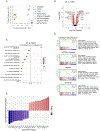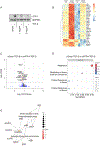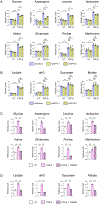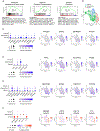mTOR signaling regulates multiple metabolic pathways in human lung fibroblasts after TGF-β and in pulmonary fibrosis
- PMID: 39745695
- PMCID: PMC12204138
- DOI: 10.1152/ajplung.00189.2024
mTOR signaling regulates multiple metabolic pathways in human lung fibroblasts after TGF-β and in pulmonary fibrosis
Abstract
Idiopathic pulmonary fibrosis is a fatal disease characterized by the transforming growth factor (TGF-β)-dependent activation of lung fibroblasts, leading to excessive deposition of collagen proteins and progressive replacement of healthy lungs with scar tissue. We and others have shown that TGF-β-mediated activation of the mechanistic target of rapamycin complex 1 (mTORC1) and downstream upregulation of activating transcription factor 4 (ATF4) promotes metabolic reprogramming in lung fibroblasts characterized by upregulation of the de novo synthesis of glycine, the most abundant amino acid found in collagen protein. Whether mTOR and ATF4 regulate other metabolic pathways in lung fibroblasts has not been explored. Here, we used RNA sequencing to determine how both ATF4 and mTOR regulate gene expression in human lung fibroblasts following TGF-β. We found that ATF4 primarily regulates enzymes and transporters involved in amino acid homeostasis as well as aminoacyl-tRNA synthetases. mTOR inhibition resulted not only in the loss of ATF4 target gene expression but also in the reduced expression of glycolytic enzymes and mitochondrial electron transport chain subunits. Analysis of TGF-β-induced changes in cellular metabolite levels confirmed that ATF4 regulates amino acid homeostasis in lung fibroblasts, whereas mTOR also regulates glycolytic and TCA cycle metabolites. We further analyzed publicly available single-cell RNA-seq datasets and found increased expression of ATF4 and mTOR-regulated genes in pathologic fibroblast populations from the lungs of patients with IPF. Our results provide insight into the mechanisms of metabolic reprogramming in lung fibroblasts and highlight novel ATF4 and mTOR-dependent pathways that may be targeted to inhibit fibrotic processes.NEW & NOTEWORTHY Here, we used transcriptomic and metabolomic approaches to develop a more complete understanding of the role that mTOR, and its downstream effector ATF4, play in promoting metabolic reprogramming in lung fibroblasts. We identify novel metabolic pathways that may promote pathologic phenotypes, and we provide evidence from single-cell RNA-seq datasets that similar metabolic reprogramming occurs in patient lungs.
Keywords: ATF4; mTOR; metabolism; mitochondria; pulmonary fibrosis.
Copyright © 2025 The Authors.
Figures






References
-
- Glassberg MK. Overview of idiopathic pulmonary fibrosis, evidence-based guidelines, and recent developments in the treatment landscape. Am J Manag Care 25: S195–S203, 2019. - PubMed
-
- Martinez FJ, Collard HR, Pardo A, Raghu G, Richeldi L, Selman M, Swigris JJ, Taniguchi H, and Wells AU. Idiopathic pulmonary fibrosis. Nat Rev Dis Primers 3: 17074, 2017. - PubMed
MeSH terms
Substances
Grants and funding
LinkOut - more resources
Full Text Sources
Medical
Miscellaneous

